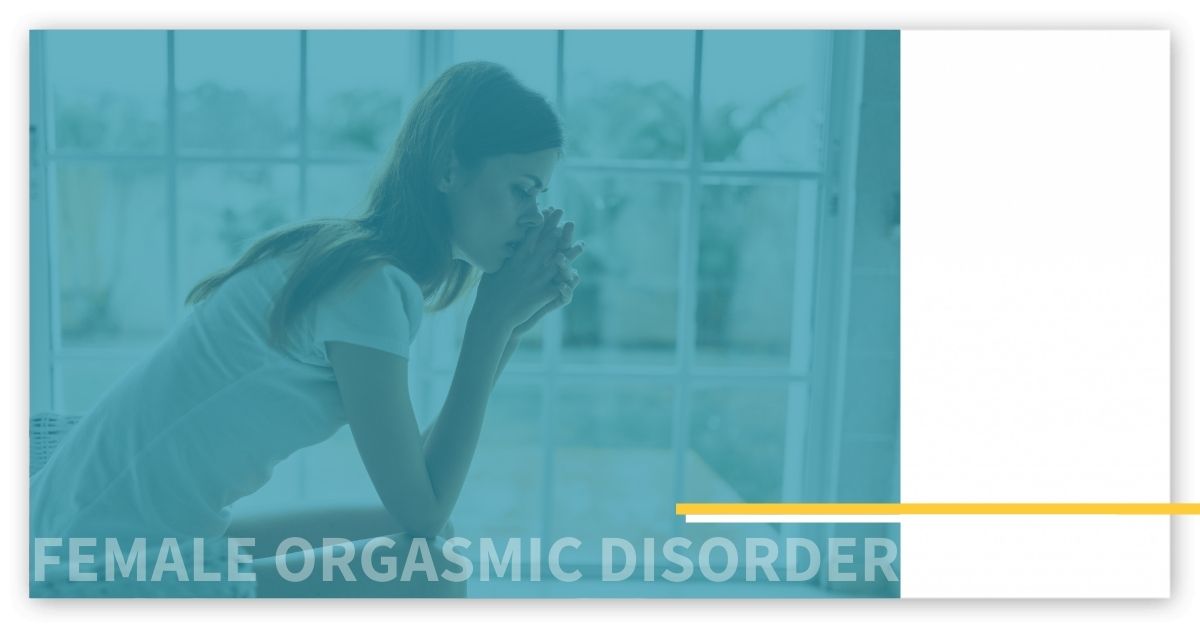What is Female Orgasmic Disorder?

Female Orgasmic Disorder is a condition that affects women’s ability to achieve sexual climax, resulting in either its absence or significant delay and reduced intensity. This disorder is defined as the inability to reach sexual climax despite adequate stimulation and emotional arousal. It can impact women of all backgrounds.
Causes may include insufficient foreplay, lack of proper stimulation, or communication issues with partners. Additionally, women with this disorder may experience related problems, such as painful intercourse or muscle contractions during penetration that prevent intercourse.
Diagnosis relies on the woman’s description of her experience, which is complicated by the wide variation in women’s sexual responses. Most women can achieve orgasm through clitoral stimulation, but fewer during vaginal intercourse. It’s crucial to note that many women with orgasmic disorder can’t achieve orgasm under any circumstances. This happens even in spite of sufficient arousal. If lack of arousal is the issue, it’s categorized as an arousal disorder.
Causes and Risk Factors
Relationship factors
One of the primary potential causes of Female Orgasmic Disorder is problems in the relationship. Because the aspects involved in a woman’s orgasm are complex, the quality of not only the physical stimulation but also the emotional connection can be critical. If a woman does not feel safe, respected, loved, or cared for, this will likely inhibit her ability to orgasm.
Even if these negative things aren’t present, a lack of communication about what a woman needs during sex with the partner can cause issues. A woman needs her partner to have an open attitude regarding discussions about exactly what she needs during sex in order to achieve orgasm.
Mental factors
Several mental health issues can complicate orgasm and contribute to Female Orgasmic Disorder. Anxiety, depression, and general stress can all contribute to a distracting environment that prevents women from relaxing, staying the in the moment, and being able to orgasm.
Medications and medical issues
Several medications including antidepressants like citalopram (Celexa), escitalopram (Lexapro), fluoxetine (Prozac), paroxetine (Paxil) and sertraline (Zoloft). Additionally, medical issues that affect nerves, especially those around the pelvis and vagina, can prevent women from fully enjoying the sensations important for orgasm. These conditions include things like diabetes, multiple sclerosis, or brain and spinal cord injuries.
Diagnosing Female Orgasmic Disorder
Women with Female Orgasmic Disorder have issues with orgasm in all or almost all of their sexual encounters. The problems include either a significant delay in reaching orgasm, reduced intensity of orgasm, or a lack of ability to orgasm entirely.
There is a large range of types and intensities of stimulation that can lead to orgasm for a women. Therefore, the experience of an orgasm can vary widely between different women and between sexual encounters for the same woman. Additionally, this means that women who cannot orgasm through penile-vaginal intercourse do not automatically have this disorder. Those women just may need other sorts of stimulation to orgasm.
Other significant criteria for the diagnosis are timing and disruption. Symptoms have to last at least 6 months before a doctor can make the diagnosis. For some people, the symptoms have lasted since the beginning of their lifetime sexual experiences while others had a period of normal sexual functioning before the difficulties began. Women with the most severe form of this disorder may have never experienced an orgasm at all.
Treating Female Orgasmic Disorder
Treatment for Female Orgasmic Disorder is highly individualized, and the approach taken depends on the specific contributing factors. Education, self-exploration, communication, and therapeutic interventions play essential roles in helping women overcome Female Orgasmic Disorder and achieve sexual satisfaction.
Cognitive Behavior Therapy
CBT focuses on changing peoples’ attitudes around sex. It aims to reduce sex-associated anxiety and negative thought patterns that impair a woman’s ability to orgasm. This approach understands the role of anxiety, stress, and other distracting thoughts in sexual performance and redirecting one’s focus to enhance sexual functioning. The ultimate goal is to help people’s thoughts stay in the moment during intercourse with the hopes that this will help with orgasm.
Sensate Focus Therapy
This therapy was developed by Masters and Johnson, two pioneers in the field of sex therapy research. This technique is designed to reduce anxiety and stress through a sequential series of body-touching exercises. These gradually progress from nonsexual to intimate and sexual touch. It aids in increasing comfort and intimacy between partners as well as understanding of each other’s sexual needs.
Directed masturbation
Directed masturbation is an effective, proven treatment that involves self-exploration and stimulation to achieve orgasm. This “at home” activity can be delivered through various types of therapy, including book-guided therapy, individual therapy, or couples therapy. Directed masturbation helps people with Female Orgasmic Disorder by giving them time and space outside of partnered sexual activity to discover exactly what they need to achieve orgasm.
Eros Clitoral Therapy Device
This is an FDA-approved device that uses a gentle vacuum to enhance clitoral blood flow and enlargement. This recognizes the importance of clitoral stimulation for orgasm in many women. The device increases clitoral sensitivity, potentially increasing the likelihood of orgasm.
Managing Female Orgasmic Disorder
Communication
Open and honest communication between partners fosters an environment of trust and understanding that can be very helpful in Female Orgasmic Disorder. This enables them to address concerns, preferences, and desires without fear or judgment. This dialogue not only promotes emotional intimacy but also allows partners to explore new techniques and experiences, tailoring their sexual encounters to better suit the needs of the individual with the disorder.
Sexual education
Sexual education empowers people to understand their bodies, sexual responses, and the various ways to achieve orgasm. It demystifies the complexities of sexual function, providing crucial knowledge that can enhance self-confidence. This paves the way for more fulfilling sexual experiences and helps manage Female Orgasmic Disorder.


 Learn
Learn Find Help
Find Help